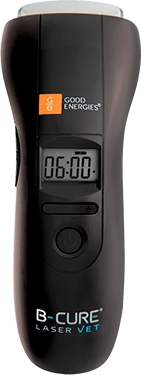Pododermatitis Prevention: Maintaining Paw Health in Dogs
Pododermatitis, a condition involving inflammation of a dog’s paw pads, can cause discomfort and pain for our furry companions. Prevention is key to ensuring your dog’s paw health and overall well-being. In this comprehensive guide, we’ll explore effective strategies for preventing pododermatitis in dogs. From proper paw hygiene to mindful paw care, we’ll cover everything you need to know to keep your dog’s paws healthy and happy.
Understanding Pododermatitis
Pododermatitis, also known as interdigital dermatitis or “paw pad inflammation,” can occur due to various reasons, including allergies, infections, foreign objects, and poor paw care. The condition manifests as redness, swelling, and discomfort in the paw pads and spaces between the toes. Left untreated, it can lead to pain, lameness, and secondary infections.
Importance of Paw Health
Healthy paws are essential for a dog’s mobility, comfort, and overall quality of life. Since dogs rely heavily on their paws for walking, running, and playing, any issue that affects their paw pads can significantly impact their daily activities. This makes pododermatitis prevention a top priority for responsible dog owners.
Preventing Pododermatitis: Effective Strategies
Regular Paw Checks
- Conduct daily inspections of your dog’s paws to identify any signs of redness, swelling, cuts, or foreign objects.
Gently lift each paw and examine the paw pads, between the toes, and the nails.
Maintaining Proper Paw Hygiene
- Clean your dog’s paws after outdoor activities to remove dirt, debris, and potential allergens.
- Use a damp cloth or pet-safe wipes to gently clean the paw pads and spaces between the toes.
Trimming Nails
- Regularly trim your dog’s nails to prevent overgrowth that can cause discomfort and affect paw posture.
- Be cautious not to trim the nails too short to avoid exposing sensitive paw tissue.
Moisturizing Paw Pads
- Use veterinarian-approved paw balms or moisturizers to keep paw pads supple and prevent dryness or cracking.
- Apply these products after cleaning the paws and ensure they are safe for ingestion in case your dog licks their paws
Proper Grooming
- Regular grooming sessions can help prevent matting between the paw pads, reducing the risk of irritation and infections.
- Keep the fur around the paw pads trimmed to prevent dirt and debris buildup.
Choosing Appropriate Footwear
- In extreme weather conditions, consider using dog-safe boots to protect your dog’s paws from hot pavement, snow, or ice.
- Ensure the boots fit well and are comfortable for your dog to wear.
Allergen Management
- Identify and manage allergens that can trigger pododermatitis. Common allergens include certain grasses, pollen, and cleaning products.
- Consult your veterinarian for guidance on allergen testing and management strategies.
Regular Vet Check-ups
- Schedule routine veterinary visits to monitor your dog’s overall health, including their paw condition.
- If you notice any changes in your dog’s paw health, seek professional advice promptly.
Final Thoughts
Pododermatitis prevention is essential to ensure your dog’s comfort and mobility. By incorporating these preventive measures into your routine, you can significantly reduce the risk of paw pad issues. Remember that each dog is unique, and their paw care needs may vary based on factors such as breed, activity level, and environment. Stay vigilant, prioritize paw hygiene, and provide the care your dog deserves. A healthy set of paws will contribute to your furry friend’s happiness and well-being for years to come.




